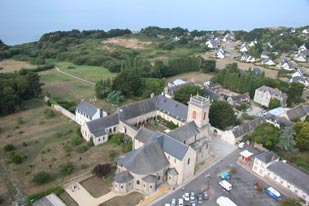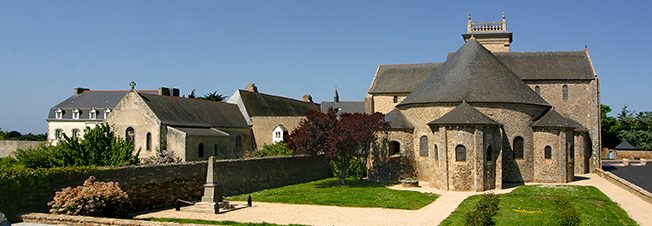Where. Do. I. Even. Start...
Robin Hood Men in Tights; this film is a trip to say the least. If I were forced to sum this movie up in only a couple of words, I'd probably go with "complete, over-the-top ridiculousness." And I absolutely LOVE IT! Now don't get me wrong, prior to this review I had seen the movie a fair few times; but not ONCE have I regretted watching it. Every viewing is like a whole new experience. Every go around you begin to pick up more and more of the abundance of, at the time, modern references. From the constant breaking of the 4th wall, to large moles that stealthily change position on a character's face from one scene to the next (watch the movie and you'll understand). The movie is basically one colossal joke, and it embraces that role with such fierce gumption that it's almost a crime to analyze it in any serious manner; as that was not the purpose of the film. It's just "AAAAHHH," it's just "OOOOOOO," so good. But enough fan-boying! I'm sure none of you came here just to listen to me gawk and make incoherent noises. So let's do this thang!
Robin Hood Men in Tights, as you would have guessed, is a film based, albeit loosely, on the Robin Hood ballads written in the 15th and 16th centuries. Most notably, the tales portrayed in the movie are reflective of those written by John Major in 1521. Original tellings of Robin Hood weren't of the morally righteous and generous Norman vigilante that we have all come to know and love. Instead, early portrayals of Robin Hood were of a violent, but devout, cut-throat who "infested" Sherwood and was more keen on taking heads than paying off debts. Although he did traditionally target figures of medieval corruption (i.e. abbots, bishops, and sheriffs), he was not the socialist revolutionary that he seems these days. But this was all largely subject to change in later representations of the tale. Thus enters John Major. Unlike previous authors who had all placed Robin in the 13th century, Major set Robin in the late 12th; the time of Richard the Lionhearted's crusades, and of King John. It is from this ballad that most modern representations are based, including the subject of this review. Wow, that was all a mouthful. Are you all still with me? I'm going to make myself feel better and just assume "yes." But for real, keeping that all in mind, let's get to the juicy analytical bits!
So just a disclaimer, this should come as no surprise, but this movie does a less than great job of portraying the Middle Ages. It is
chock full of historical inconsistencies and misconceptions; although it could be argued that they are present to support comedic effect. But regardless, no historian would ever watch this film and be like, "yeah that all looked about right to me." No, I'm sure our wonderful professor (brownie points) could attest to that. Although the tale of Robin Hood is more or less fictitious, it is nonetheless rooted in history and built around that context; save the Men in Tights film of course. But what exactly is it that makes this movie so spectacularly ridiculous? Well let's just start going through some plot points and see what conclusions you draw. I'll go ahead and try to leave out key details that may spoil the film in the event that you decide to give it a watch after reading this post.
In every single scene there is something to comment and critique on historically and...well...logically. As mentioned before, there are a plethora of references to modern apparel, pop-culture, technology, social commentary, etc. all throughout the film. For that reason, I'll be focusing mainly on the points in the film that are conveyed as being rooted in some historical fact; such as the timeline and common but inaccurate medieval tropes. For instance, at the beginning of the film and after a hilariously self-aware opening credits sequence and a medieval rap to set up the story and tone, the film opens with an introduction of the main character, Robin of Loxley (played by Cary Ewles, known for his role in the Princess Bride). Supposedly captured by Middle Eastern warriors amidst the third crusade, Robin is being taken to a prison for interrogation regarding the whereabouts of his king, Richard The Lionhearted (r. 1189-1199). Ignoring the fact that the prison's "host" is wearing a tuxedo and treating the captivity much like the experience at an upscale French hotel, there is nothing inherently wrong here historically. At this point in the film, the timeline seems pretty reasonable. However, the film quickly runs into issues upon Robin's inevitable escape from the prison and arrival at his home country, England.
Here he meets up with Dave Chappelle's character, Achoo, who is being brutalized by some local guards. After a commentary on the prevalence of police violence in the modern age, they both make their way to Robin's family castle, Loxley Hall. It is here that Robin witnesses the repo. and carting away of his home, and discovers, through his loyal blind servant Blinkin, his family's tragic demise. His father, mother, brothers, dog, cat, and goldfish, were all killed by some manner of ailment or conflict. His brothers for instance were killed by the black plague...wait...that's not right. How can that be true? The infamous plague hadn't really come into full-swing until the 14th century. But Movie, what gives? I thought we were supposed to believe that this was set in the 12th century during the rein of Richard the Lionhearted and the third crusade! Yes I'm afraid it's true, not even 20 minutes in and we've run into the first significant historical failing of the film; and unfortunately this isn't the only occurrence of this same discrepancy. For instance, later in the film, this same reference to the plague is made by Mel Brooks's character, Rabbi Tuckman. Although this isn't really unexpected. Most modern movies take whatever opportunity they can to reference the plague, as it's one of the most significant events of the era. If that were the only historical problem with the film, it could probably be forgiven. But unfortunately, that's far from the case.

As far as timeline is concerned, the above example is probably the most serious offense in the film. But there are two others that I was personally able to pick up on, the first of which occurs when the usurper and main antagonist of the film, King John, goes seeking guidance from a woman named Latrine, formally known as "Shithouse." She matches all of the criteria: long and crazy grey hair, scraggly clothes, snaggletooth, large nose, long finger nails, scratchy high-pitched voice. Yup, there's no doubt about it, she's a witch. MOVIE..that's not right! The concept of witchcraft didn't enter the mainstream until the Early Modern Period (from around the 1500s to the 1800s). But this is supposed to be the 12th century right? Again, this is another unsurprising failure in the timeline of the movie. Witchcraft in the Medieval period is a common misconception that has persisted through modern portrayals of the age. However, I'd like to actually give the film props here in that it would appear that it is at least self-aware of this fact. While King John presumes her knowledge and seeks her guidance as a seer of the future, Latrine begins constructing a "potion," using all sorts of witchly and disgusting ingredients. But in a twist of events, she reveals that she has been cooking the Kings breakfast the whole time stating, "You want certain, hire a witch. I'm just your cook." Well played Men in Tights...credit where credit is due.
The other discrepancy occurs in the scenes when Robin and King John cross paths for the first time in King John's, formally King Richard's, castle. In an attempt to capture Robin and his accomplices, John calls on his knights to strategically surround them. One after another these knights flow in from the side rooms eventually enclosing the entire room. But during this scene something was wrong, something was catching my eye. To quench my curiosity, I did a quick search through Newman's Daily Life in the Middle Ages, through the section regarding armor. Unfortunately through my investigation my fears were indeed confirmed - full plate body armor wasn't prevalent any time before the 13th century. This is another, less self-aware, issue with the setting of the wonderful Robin Hood Men in Tights; as I've mentioned before, from the beginning of the movie the viewer is meant to believe that the main timeline revolves around the 3rd crusade in the 12th century. But on top of that, the movie also plays slightly on the misconception that plate armor of that time period was incredibly stiff and difficult to move in, as all of the knights are toppled in one fell swoop as if they were a line of dominoes. Although less of an offense, plate armor in its prime was actually surprisingly versatile. No, of course it didn't offer the movement or style of green spandex tights and brown cloth shirts, but it sure as hell didn't immobilize the wearer to the degree shown in the film.

While on the topic of misconceptions, there were quite a few in the movie that are worth a mention. I'm referring to these points separately from the above issues because I believe them to be less an issue of place-in-history and more an issue of truth-in-history. For instance, one of the main plot points in the film revolves around the use of a chastity belt..."it's an Everlast." This, as we've come to understand through our studies, is simply a blatant misconception of the era that has been popularized in modern time. As another example, there is a scene in the film when Robin is slapped in the face with a glove to signify the offer of a duel. I actually didn't know this going into the film, but upon doing a bit of research I found that this gesture was actually quite rare. Apparently the much more common approach was to put the challenge into writing and have it delivered by a friend, or friends, who acted as a "second." So although it's not entirely inaccurate, I would consider it a trope that is over-represented in modern media outlets, and wasn't really prevalent until the 1500s. Another major error that appears to be wrongly thought of as being historically accurate is the right of the King to kiss the bride before a marriage. Upon King Richard's return, he requests said right and, just as the "right of the first night" depicted in Brave Heart, it's complete bullshit. As far as we are aware, no such "right" ever existed, but I suppose the director just wanted to throw it in for comedic effect. Aside from the boring architecture shown throughout the film, which I am willing to concede as the result of a low budget, the only blatant misrepresentation or misconception of the Medieval period is one that is present in just about every film out there set in the Middle Ages. That is, the idea that basically everyone was completely brain-dead stupid. There are multiple scenes throughout the film in which the peasants of the region are portrayed as daft and incapable morons. We as humans like to believe that every civilization before us was innately less intelligent and less enlightened, and we especially like to think that the Middle Ages in particular was an order-less world of blind spirituality and illiteracy...but none of these things are true.
Now, I've gone over A LOT of bad stuff. But what about the good stuff? Well, there were definitely a couple of things that surprised me a bit and that Robin Hood Men in Tights actually did quite well. For instance, there was an amazing array of colors and clothing portrayed throughout the film, which really shocked me. I half expected the movie to fall into the same dirt-brown trap that many other medieval films do. Additionally, one of the most important plot points, the brotherly relationship between King Richard and King John shown in the film is completely legit. Additionally, John Lackland did indeed overthrow his brother's administration whilst he was away on the third crusades. Lastly, there was a short, but significant display of Medieval fun and games in the movie, with Robin being lured to and competing in an archery contest. On top of this, the onlookers during this spectacle were comprised of all classes of people, from peasants to those of a more noble lineage. Which is something that is often poorly illustrated in other films. All in all, in classic Mel Brooks style, the movie was a hilarious and ridiculous experience and I highly recommend it to all of you. However, if you are on the lookout for something a bit more academic and historically accurate, I'd look elsewhere. Although it did do some things right, the movie is much more enjoyable if you just release yourself and ignore all of the stereotypes and historical continuity errors. Overall, I rate Robin Hood Men in Tights a solid not-the-best-resource-out-of-10.

Citations
Wright, Allen W. “The Early Ballads and Background of Robin Hood -- The Early Years, Wolfshead Through the Ages.” Wolfshead Through the Ages So You Think You Know Robin Hood , www.boldoutlaw.com/robages/robages2.html.
Brooks, Mel, director. Robin Hood--Men in Tights. 1993.









